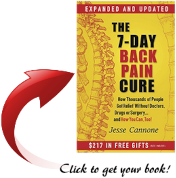Pain relief is a critical area of research as pain is a widespread problem that affects millions of people worldwide. Pain management can have a significant impact on a person’s quality of life. The need for more effective pain relief options has led to extensive research in the field, resulting in many promising developments.

Please note, I am not a medical professional, and what follows is not medical advice. However, I came across this information that I felt might be of value to you regarding the latest research on pain relief, which highlights some cutting-edge approaches to managing pain. Here are 5 cutting-edge research areas for pain relief:
- Gene therapy: Scientists are exploring the possibility of using gene therapy to target the genes that are responsible for producing pain. By targeting these genes, researchers hope to create a long-lasting pain relief solution that doesn’t require regular medication.
- Neurostimulation: Neurostimulation involves using electrical impulses to interfere with the pain signals that travel along the nerves. There are many different types of neurostimulation, including spinal cord stimulation, deep brain stimulation, and transcranial magnetic stimulation.
- Immunotherapy: Immunotherapy involves using the body’s immune system to target the sources of pain. Scientists are exploring the use of immunotherapy to treat chronic pain conditions like fibromyalgia and arthritis.
- Cannabinoids: Cannabinoids are compounds found in the cannabis plant that have been shown to have pain-relieving properties. Researchers are exploring the use of cannabinoids in pain relief, including the development of new cannabinoid-based drugs.
- Virtual reality: Virtual reality technology is being used to distract patients from their pain. By immersing patients in a virtual environment, researchers hope to create a more effective pain relief solution that doesn’t rely on medication.

Overall, these cutting-edge research areas offer hope for new and more effective pain relief options in the future. However, it is important to note that these approaches are still being studied and developed, and it may take time before they become widely available. In the meantime, people experiencing pain on a daily basis should continue to work with their healthcare providers to find the best pain management plan for their individual needs.
To Your Success & Freedom,
Glenn Shimabukuro



